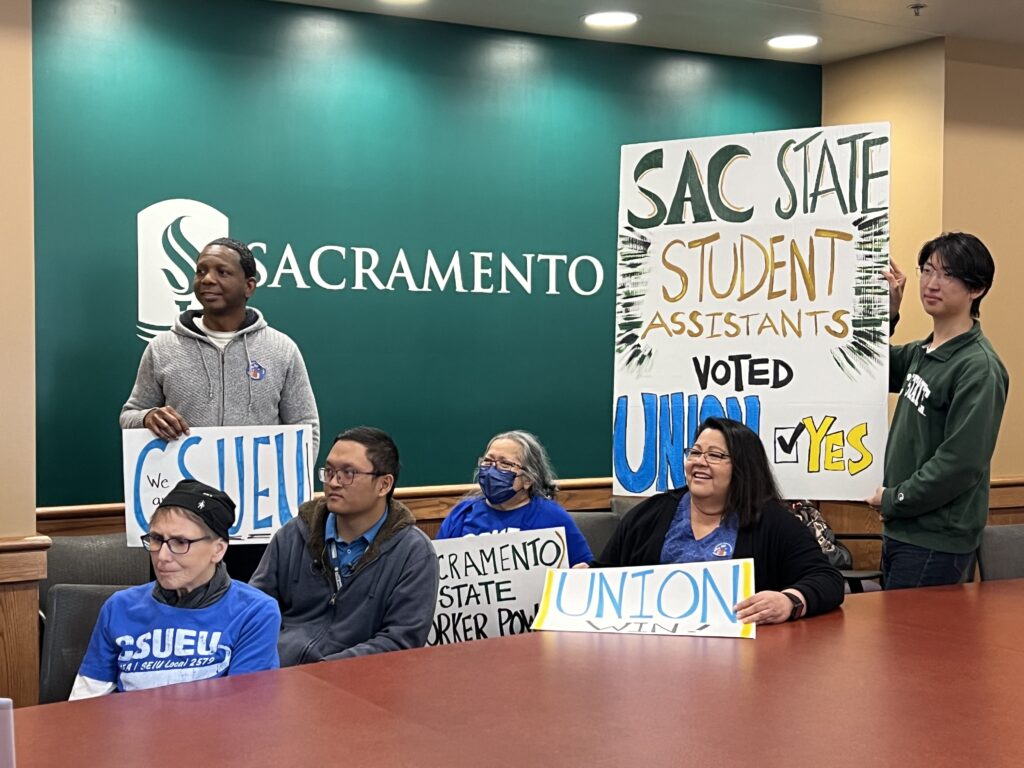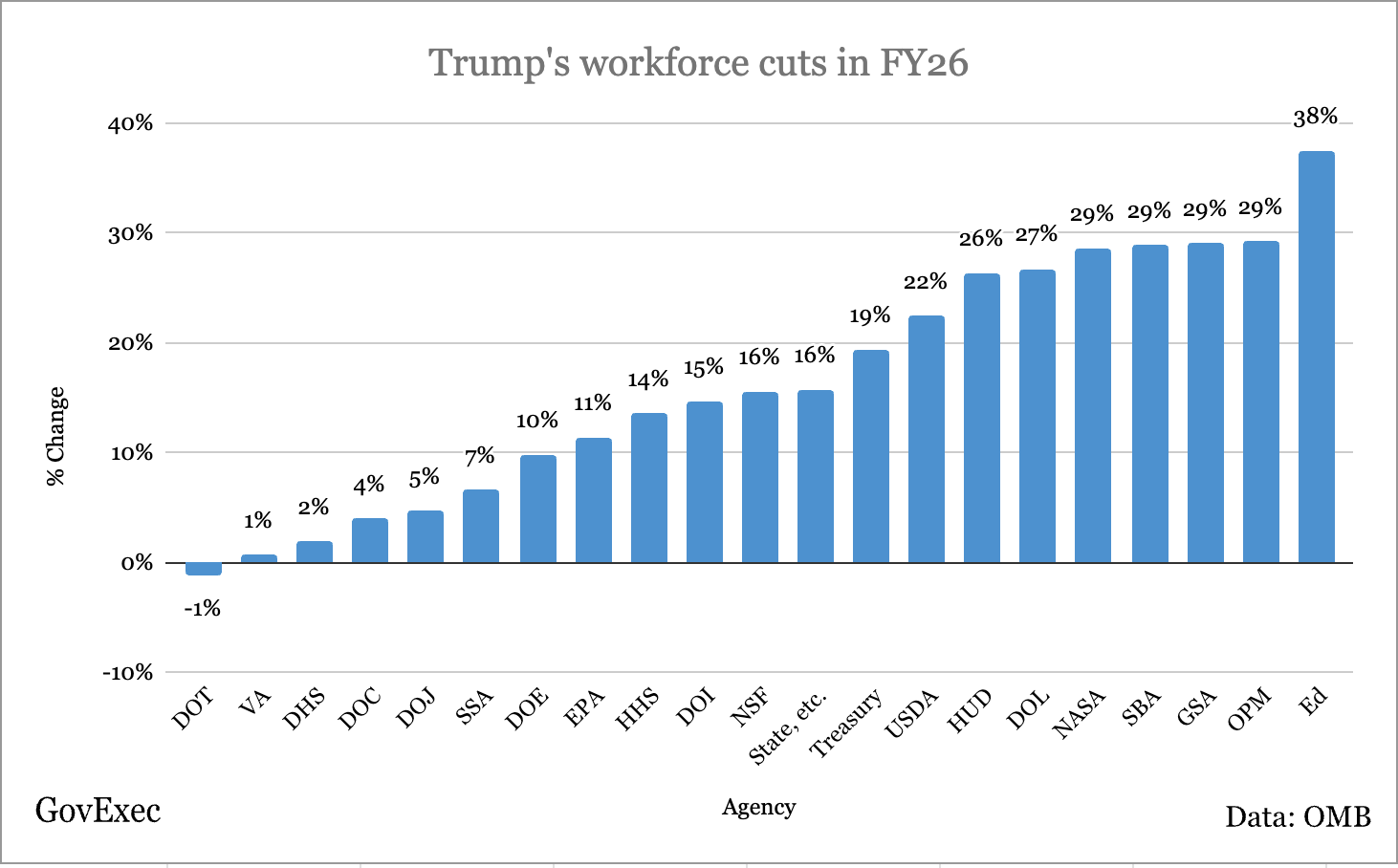
Sacramento State student assistants and employees celebrate the official vote for the undergraduate student assistants to unionize.
Ashley A. Smith/EdSource
This story was updated at 1:10 p.m. Friday to include more comments from student workers and CSU chancellor’s office..
Student assistants and workers in the California State University system announced Friday that they had voted in favor of unionizing.
The students across the 23 campuses voted in favor of organizing one of the largest student worker organizations in the country so they could fight for better pay, working conditions, sick and paid leave, and more work hours.
The students overwhelmingly voted 7,050 to 202 in favor of joining the CSU Employees Union (CSUEU).
“This is for all of us and for all of our futures,” said Cameron Macedonio, a student assistant at CSU Fullerton. “Student assistants were increasingly fed up with the CSU administration’s treatment of us. They undervalue us. On one hand, they act as if we’re dispensable, but on the other hand, they expect us to do the work of full-time staff but for minimum wages and no benefits.”
Student assistants often work for minimum wage, are limited to 20 hours or less a week, and don’t receive sick or paid leave.
Danny Avitia, a senior majoring in sociology and leadership development at San Diego State, said he’s found it difficult to survive on $16.50 an hour while working in the campus Office of Employee Engagement. He assists the director of that office with organizing events, newsletters, graphics, media and communications.
Avitia said he’s had to take on two more jobs and whenever he’s gotten sick, he “shows up to work and gets everyone sick” because he doesn’t receive any leave or paid time off.
Unionizing “means better access to discounts like parking and transit,” he said. “It means that I can fight for a better living wage because, again, meeting the basic needs of people is simply not enough here in California anymore.”
Now, they will need to decide what they want to bargain for, assemble a negotiating team and leadership, and present their demands to the Cal State administration. As part of the CSUEU, they’ll have assistance from that organization and the Service Employees International Union or SEIU.
“With 20,000 student assistants joining CSUEU’s 16,000 CSU staff members, university management will no longer be able to divide students and staff or exploit student labor to degrade staff jobs,” said Catherine Hutchinson, president of CSUEU. “Joining together is a win for students, for staff, and for all Californians who have a stake in the CSU’s mission.”
Many of the student assistants feel unionizing was just one step in a long process to better pay and working conditions. They all recently watched the California Faculty Association, which represents 29,000 professors and, lecturers go on strike twice for a better contact.
“There will be some struggles that will come with it,” said Alejandro Carrillo, an international business junior at San Diego State. “We just had the CFA strike and saw how hard it was for them to fight and the struggles that came with it. I’m not expecting anything less than that for student workers.”
In the meantime, the chancellor’s office said it would maintain the current standards and requirements for student assistants.
“The CSU has a long history of providing on-campus jobs to students through student assistant positions, which give our students the opportunity to gain valuable work experience while they pursue their degrees,” said Leora Freedman, CSU’s vice chancellor for human resources. “The CSU respects the decision of student assistants to form a union and looks forward to bargaining in good faith with the newly formed CSUEU student assistant unit.”
California Student Journalism Corps member Jazlyn Dieguez, a fourth-year journalism student at San Diego State University, contributed to this story.



